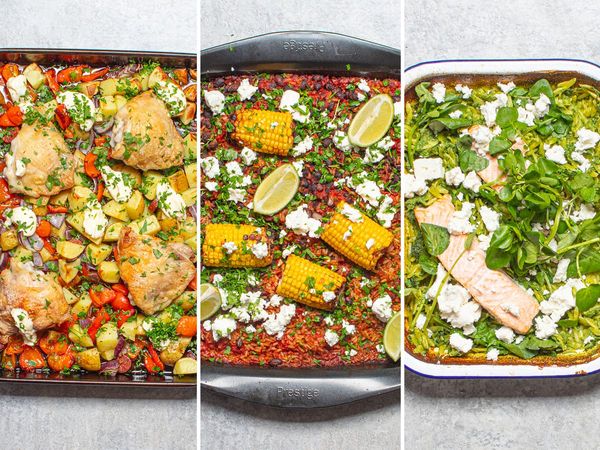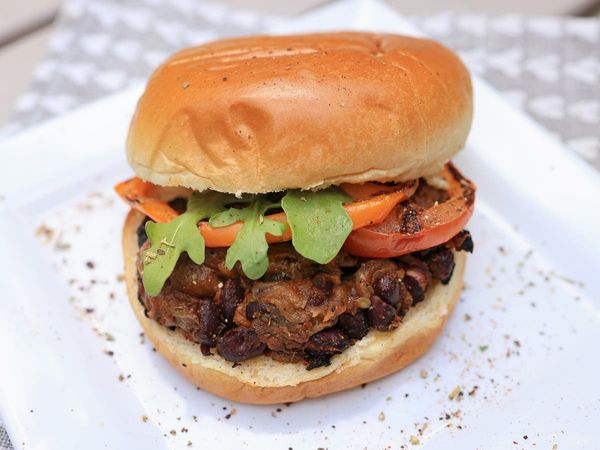
One of the pitfalls of being an avid home cook is that you end up with a hodgepodge of half-used spices and condiments from various world food stores. It can lead to some interesting culinary experiments – tarragon finding its way into an Indian curry, say, or tahini into a French omelette. It’s in that spirit of experimentation that today’s dish was born: ingredients I’d originally bought for making mapo tofu somehow ended up in our Sunday lasagne. The essential flavour here is doubanjiang, or Pixian chilli bean paste, an intensely umami fermented broad bean paste that you’ll find in Chinese shops.
Sichuan-inspired lasagne with chard
Prep 25 min
Cook 3 hr
Serves 6
For the bechamel
10 fresh bay leaves
2 tsp black peppercorns
2 tsp sichuan peppercorns
6 star anise
900ml whole milk
60g butter
60g plain flour
For the meat sauce
1kg pork mince
3 tbsp fermented black soybeans
400g tin chopped tomatoes
½ tsp chilli powder
100g tomato puree
200g Pixian chilli bean paste
5 garlic cloves, peeled and finely chopped (25g net)
5cm piece root ginger, peeled and finely chopped (25g)
250ml whole milk
To assemble
1 bunch spring onions, trimmed and cut into 1cm pieces
2 tsp vegetable oil
9 dried lasagne sheets (or more, depending on the size of your dish)
100g grated parmesan
300g mozzarella, sliced
For the chard
2 garlic cloves, peeled and finely sliced
1 tbsp vegetable oil
1 large bunch chard, stalks and leaves separated, both roughly chopped
1 tbsp dark soy sauce
2 tbsp sesame seeds, lightly toasted
Start with the bechamel. Put the whole spices and milk in a large saucepan, bring to a gentle simmer, cook for a few minutes, then turn off the heat, cover and leave to cool and infuse.
Crumble pork mince into a large saucepan and cook on a medium-high heat for eight to 10 minutes, until evenly browned. Add the soybeans, tomatoes and chilli powder , bring to a simmer, then turn the heat right down. Cover and cook for an hour, stirring occasionally. Stir in the tomato puree, chilli bean paste, garlic, ginger and remaining 250ml milk, and cook for another hour. The sauce will eventually turn a rich, dark red with clear fat rising to the top; add a little water if it looks dry.
Meanwhile, fry the spring onions in two teaspoons of vegetable oil for three to four minutes, until softened and browned at the edges. Blanch the lasagne in batches for 90 seconds, then set aside on a rack.
When the meat has had 90 minutes, strain the bechamel mix to remove the spices. Melt the butter in a clean pan on a medium heat, add the flour and stir for a couple of minutes. Gradually add the milk, stirring to avoid lumps, simmer for three minutes, then cover and turn off the heat.
Heat the oven to 200C (180C fan)/390F/gas 6. Grease a 28cm x 21cm baking dish with butter, then spoon in a third of the meat. Top that with a quarter of the bechamel, a third of the onions and a quarter of the parmesan, then cover with three sheets of pasta. Repeat these layers twice more, then spoon over the remaining bechamel,. Top with the rest of the parmesan and all the mozzarella, then bake for 40-50 minutes, until browned and bubbling.
Put aside the lasagne to rest and cool while you cook the chard. On a low heat, fry the garlic in a tablespoon of oil for two to three minutes, until lightly browned, add the chard stalks and soy, and cook for two minutes. Stir in the leaves, cook for three to four minutes, until wilted, then sprinkle on the sesame seeds and serve alongside the lasagne.
Discover this recipe and many more from your favourite cooks in the new Guardian Feast app, with smart features to make everyday cooking easier and more fun










